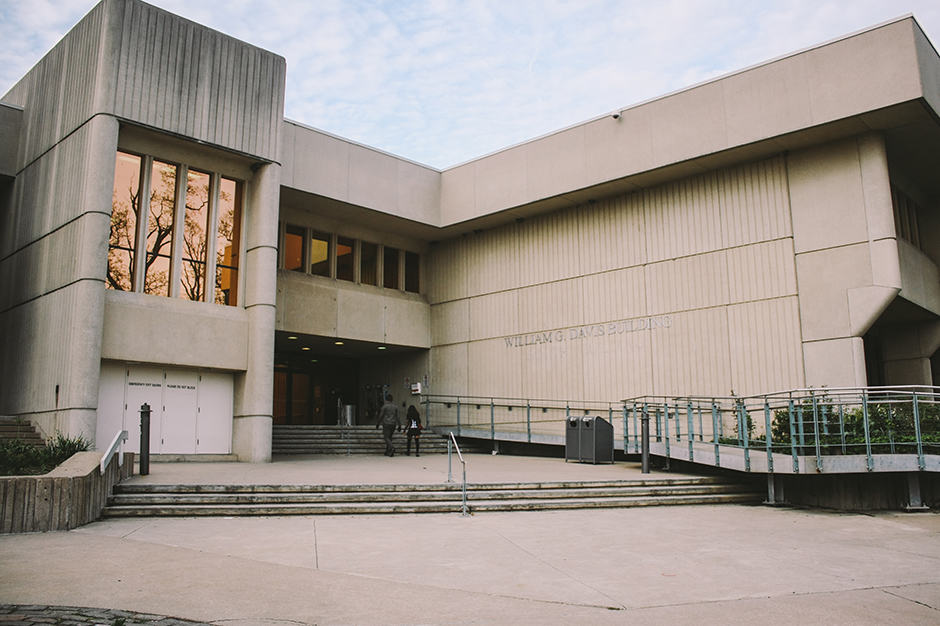Living, eating, and parking at UTM is on the verge of becoming more expensive. The University of Toronto Mississauga Campus Affairs Committee has recommended approval of the 2015–2016 operating plans for all UTM service ancillaries, which includes a rise in residential rates, parking, meal plans, and the price of food sold on campus.
Under the operating plans, residence fees will increase by 5.5 per cent, the price of parking permits will rise by three per cent, and meal plan rates will increase by 1.5 per cent on average. Retail food on the campus is predicted to increase by 2.76 per cent in accordance with inflation.
The operating plans will be sent to the UTM Campus Council for approval on February 5.
EXPENSES AND UPGRADES
According to Paul Donoghue, chief administrative officer of UTM, the fee increases are necessary to cover ancillary expenses and “required reserves.” Ancillary expenses refer to all expenses including the cost of replacing equipment and furniture, maintenance, loan and interest payments, cost of supplies, and other expenses. Reserves are funds that are held in case of unforeseen or emergency expenditure.
University of Toronto Mississauga Students’ Union (UTMSU) president Hassan Havili says that the union has been trying to fight the rise in ancillary fees. He calls them “a major source of pain for a lot of students.”
Some of the increased expense is accounted for by recent projects to improve food and parking services at the Mississauga campus. Over the past year, the UTM Food Service Department has opened the North Side Bistro and Innovation Centre Café, and renovated the Colman Commons. While this has broadened food options for students, it has also resulted in increased expenditure due to furniture and equipment depreciation. UTM also recently created a new job, the casual communications person who, according to Donoghue, works to better engage the UTM community by liaising with food service providers on advertising and marketing.
The UTM Food Service Department also requires investment for several construction projects including the Davis Building Permanent Food Court and a food service in the North Building Phase II project. Even with the increased rates students will have to pay, the Food Service is still expecting to have a budget deficit from 2016 to 2019.
Havili says these changes are not enough to warrant an increase in fees. “We want improvements to the services on campus but we do not want that to be at the expense of food prices and therefore student pockets,” says Havili.
For Rachel Currie, a first-year life sciences major, these changes have made a major impact on her experience. “As a celiac, I’m in love with the new tea bar in [Oscar Peterson Hall] and the huge steps they’ve made in expanding good food options,” says Currie, adding that her optimism is somewhat curbed by the negative feedback she’s heard from upper year students.
The parking fee increase is partly due to a new initiative by UTM Parking & Transportation Services to expand parking on campus. The proposal is intended to address the reduction of parking space availability due to construction projects on campus and the increasing student population.
The parking deck will be built on top of the parking lot that sits across from the Recreation, Athletics and Wellness Centre in order to avoid encroaching into the green spaces surrounding the campus and will add 300 new spaces. Parking & Transportation Services will be taking a loan of $6.235 million from the UTM operating budget to realize the project.
A ROOF OVER YOUR HEAD
To Stephanie Chen, a fouth-year interactive digital media specialist at UTM, the more burdensome increase will be the cost of residence accomodations. First-year accomodation in traditional residence at Oscar Peterson hall cost students $7,424 for the 2014–2015 year. With a 5.5 per cent increase, the same space would cost $408 more next year.
Chen notes that residence rates create an accessibility issue for some.
“In the past two years, I haven’t been able to stick with the same roommate because they decided to live off campus due to the high cost of living on campus,” says Chen.
Including the fee increase, net income for residence is predicted to increase by 137 per cent before transfers for the 2015–2016 financial year. Though this is the highest budgeted increase in net income, students have not noticed the same increase in residence services. Chen notes that in the older residence buildings especially, the condition of the furniture and ceilings is below par. Havili agrees, saying that “the cost of living on residence can be costly relative to service and space.”
In fact, the main cost for residence services is loan and interest payments, which take up 40 per cent of total expenditure. These loans were made due to the financial strain that residence services faced as a result of the building expansion between 1997 to 2007. The remaining loan balance is forecast to be at $42.4 million by the end of the 2014–2015 financial year.
Havili says that the UTMSU has been lobbying the university to look for other options to fund capital projects, such as the expansion of the deck.
“We would love to see money come from the [university’s] operating budget as opposed to the pockets of individual students that are required to attend classes, office hours, tutorials and all other campus activities,” he says. “We highly encourage student representatives…to engage and empower the council representatives to discuss alternative options to the development of our campus capital projects instead of knocking on the doors of students that receive minimal incomes based off minimum wage salaries.”


